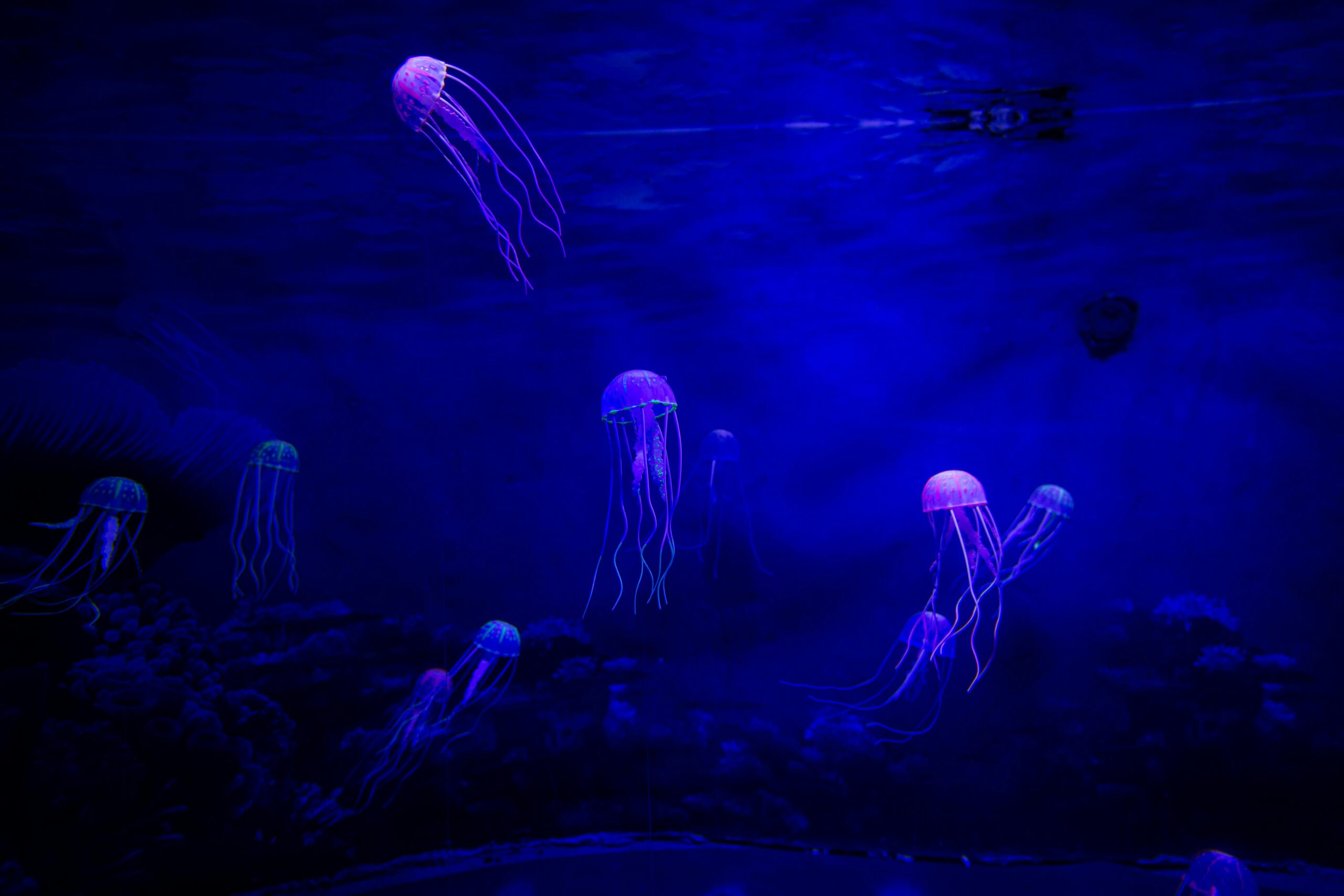Free shipping and returns for members.
The Mystery of Bioluminescent Bays: Nature’s Underwater Light Shows
Imagine paddling through a still, dark bay at night. The air is warm, and the water around you is black as ink. But then, with every stroke of your paddle, the water comes alive—glowing with iridescent blue-green light. It’s not some scene from a science fiction movie. It’s the real phenomenon of bioluminescence, and you can witness it in certain places around the world.
Bioluminescence, the ability of living organisms to produce light, is a fascinating and magical occurrence in nature. While it might sound like something out of a fairy tale, it’s a phenomenon that has been around for millions of years, with creatures from fireflies to deep-sea fish using bioluminescence to communicate, lure prey, or ward off predators.
But it’s the bioluminescent bays that have captured the imaginations of travelers, scientists, and curious minds alike. These glowing waters are some of nature’s most awe-inspiring spectacles, and they can be found in just a handful of locations across the globe, with Puerto Rico’s Mosquito Bay being one of the most famous.
The Science Behind the Glow

At the heart of bioluminescence is a chemical reaction involving two main ingredients: luciferin (a light-emitting molecule) and luciferase (an enzyme that helps catalyze the reaction). When luciferin reacts with oxygen in the presence of luciferase, it releases energy in the form of light. This light is typically blue or green, the colors that travel best through water.
In bioluminescent bays, the glow comes from microscopic organisms called dinoflagellates. These single-celled plankton are responsible for creating the breathtaking light show. When disturbed—whether by movement in the water, a passing boat, or the swirl of a swimmer’s hand—the dinoflagellates emit light as a defense mechanism, possibly to confuse or scare away predators.
There are several different types of dinoflagellates that produce bioluminescence, but the ones found in bioluminescent bays like Mosquito Bay (Pyrodinium bahamense) are particularly abundant and responsive to motion.
The Best Places to See Bioluminescence
While bioluminescent bays are rare, they’re not impossible to find. Here are some of the most notable places where you can witness this natural wonder:
- Mosquito Bay, Vieques, Puerto Rico
Often cited as the brightest bioluminescent bay in the world, Mosquito Bay is home to an extraordinary concentration of Pyrodinium bahamense. The bay has been carefully preserved, and the glowing waters are best experienced by kayaking at night, when the glow is most vivid. - Luminous Lagoon, Jamaica
This bay near Falmouth on the northern coast of Jamaica is known for its dramatic blue glow. The phenomenon is caused by dinoflagellates, which are particularly visible when boats stir up the water. Tour operators often take visitors on nighttime boat rides, letting them watch the water light up with each movement. - Halong Bay, Vietnam
While Halong Bay is famous for its karst formations and stunning scenery, certain areas of the bay also host bioluminescent plankton. Kayaking through the water at night gives visitors a chance to witness both the natural beauty of the landscape and the underwater light show. - Toyama Bay, Japan
Known for its bioluminescent squid, Toyama Bay on Japan’s west coast offers a different kind of glow. While not a traditional bioluminescent bay filled with plankton, the region’s squid glow bright green and blue, creating a surreal underwater light experience that can be seen from boats or even during scuba diving excursions. - Maya Bay, Thailand
Maya Bay, once famous for its appearance in The Beach with Leonardo DiCaprio, is also home to bioluminescent plankton. Though it has been closed off to tourists for preservation efforts, once it reopens, the glowing waters are a hidden gem that awaits.
Why Do Some Bays Glow?
Scientists are still studying the specific conditions that allow certain bodies of water to produce bioluminescence at such high levels. Some of the factors believed to contribute include:
- Nutrient-rich waters: Many bioluminescent bays are found in areas where the waters are rich in nutrients, encouraging the growth of the plankton responsible for the glow.
- Shallow water: Shallow, calm waters allow for better visibility of the glowing plankton, as they are closer to the surface and more likely to be disturbed by the movement of boats or paddles.
- Temperature and salinity: The temperature and salinity of the water also play a role in the plankton’s activity. Warm, tropical waters tend to favor the proliferation of bioluminescent organisms.
The high concentration of dinoflagellates found in some bays is often the result of a delicate balance of environmental factors. Some bays have been protected or designated as ecological preserves, helping to maintain the fragile conditions that allow these magical displays to happen.
The Future of Bioluminescent Bays
As beautiful and magical as they are, bioluminescent bays face challenges. Pollution, overfishing, and climate change are all threats to the delicate ecosystems that sustain these glowing waters. In some places, tourism has led to increased boat traffic and other disturbances that can disrupt the natural rhythms of these bays. Responsible tourism and conservation efforts are crucial to ensuring that these bays remain intact for future generations to enjoy.
But as long as they persist, bioluminescent bays will continue to be one of nature’s most awe-inspiring spectacles—a reminder of the wonders that exist just beneath the surface of our oceans and the fragile beauty that sustains them. If you ever have the chance to see one of these glowing waters, you’ll find that there’s something profoundly humbling about being in the presence of such a rare, living light show—an ancient phenomenon that has survived through the ages, quietly lighting up the night.
